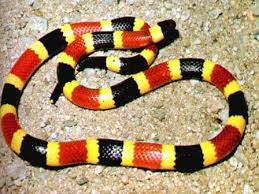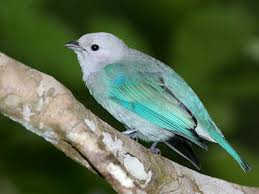Totaled 6/8 DONE!
Totaled 5/28/10 Mr F
Vertebrates are members of the subphylum Vertebrata, chordates with backbones or spinal columns. About 58,000 species of vertebrates have been described. Vertebrata is the largest subphylum of chordates, and contains many familiar groups of large land animals. Vertebrates comprise cyclostomes, bony fish, sharks and rays, amphibians, reptiles, mammals, and birds. Extant vertebrates range in size from the carp species Paedocypris, at as little as 7.9 mm (0.3 inch), to the Blue Whale, at up to 33 m (110 ft). Vertebrates make up about 5% of all described animal species; the rest are invertebrates, which lack backbones.
The defining characteristic of a vertebrate is the vertebral column, in which the notochord (a stiff rod of uniform composition) has been replaced by a segmented series of stiffer elements (vertebrae) separated by mobile joints (intervertebral discs, derived embryonically and evolutionarily from the notochord). However, a few vertebrates have secondarily lost this anatomy, retaining the notochord into adulthood, as in the sturgeon. Jawed vertebrates are typified by paired appendages (fins or legs, which may be secondarily lost), but this is not part of the definition of vertebrates as a whole.
Characteristics of Vertebrates:
- Skulls
- Backbone
- paired appendages
- ventral heart
- closed circulatory system
- hinged jaw
- In all vertebrates the mouth is found at or right below the anterior end of the animal, while the anus opens to the exterior before the end of the body
- Vertebral Column
This video shows a dissection and analysis of a vertebrate
There are Seven Classes of Vertebrates:
- Jawless Fish (Class Agnatha)
Agnatha (Greek, "no jaws") is a of jawless fish The group excludes all vertebrates with jaws

- Cartilaginous Fish (Class Chondrichtynes)

- Bony Fish (Class Osteoichthynes)
- internal skeleton made of bone.
Osteichthyes, also called bony fish, are a group of fish that have bony, as opposed to cartiligeous, skeletons. The vast majority of fish are osteichthyes, which is an extremely diverse and abundant group consisting of over 29,000 species. It is the largest class of vertebrates in existence today. Osteichthyes is divided into the ray-finned fish and lobe-finned fish.

- s, frogs, and toads: lay eggs in water, adults live on land, Amphibians (class Amphibia, from Amphi- meaning "on both sides" and -bios meaning "life"), such as frogs, toads, salamanders, newts, and caecillians are cold-blooded animals that metamorphose from a juvenile water-breathing form, either to an adult air-breathing form, or to a paedomorph that retains some juvenile characteristics.

- First fully terrestrial vertebrate ex: snake, lizard (usually scaly skin)
- Reptiles are animals in the Reptilia class characterized by breathing air, a "cold-blooded" metabolism, laying tough-shelled amniotic eggs (or retaining the same membrane system in species with live birth), and skin with scales or scutes.
- They are tetrapods (either having four limbs or being descended from four-limbed ancestors) and lay amniotic eggs, in which the embryo is surrounded by a membrane called the amnion. Reptiles today inhabit every continent except Antarctica!
- For some reason, people think of dinosaurs as mammals, but they're really REPTILES! Dinosaurs are a diverse group of reptiles.
- Flight
- Birdsare w animals. There are around 10,000 living species, making them the most varied of tetrapod vertebrates.
- They inhabit ecosystems across the globe, from the Arctic to the Antarctic. Birds sizes range from 2 inches, like the Bee Hummingbird to the 9 foot Ostrich.
- Fossil records indicate that birds evolved from theropod dinosaurs during the Jurassic period, around 150–200 million years ago. Most paleontologists regard birds as the only class of dinosaurs to have survived the Cretaceous-Tertiary extinction event approximately 65.5 million years ago.
- mammary glands (organs that produce milk for the sustenance of the young) . hair
- Mammals are a class of verterbrate, air-breathing animals whose females are characterized by the possession of mammary glands while both males and females are characterized by sweat glands, hair and/or fur, three middle ear bones used in hearing, and a neocortex region in the brain.
- Mammals are divided into three main infraclass taxa depending how they are born. These taxa are: monotremes, marsupials and placentals. Except for the five species of monotremes (which lay eggs), all mammal species give birth to live young. Most mammals also possess specialized teeth, and the largest group of mammals, the placentals, use a placenta during gestation. The mammalian brain regulates endothermic and circulatory systems, including a four-chambered heart.
What are MONOTREMES?
- Monotremes are mammals that lay eggs instead of giving birth to live young like marsupials and placental mammals. An example of a Monotreme is a platypus.
What are MARSUPIALS?
- Marsupials are an infraclass of mammals, characterized by a distinctive pouch (called the marsupium), in which females carry their young through early infancy. In modern times, they are well-known for being the dominant group of mammals in Australia, though there are also a number of species found in the United States. A great example of marsupials are Kangaroos.
example of reptile example of a bird
first fully terestrial vertebrate

Shows the 7 classes of vertebrates
Land Invasion
When invertebrates came onto land, their support system, respiratory system, reproductive methods, excretory system, and ways to regulate temperature did not match their new environment. Therefore, they had to adapt to their surroundings by changing the following:
1) Support
The vertebrates needed the structure of bones (muscles support bones), a higher density (water has a low density)
2) Water
a) Gills -> Now that the inverts were on land, and their gills needed O2, their gills had to be kept moist. Therefore, hiding in damp places like caves was ideal for them. Also, if their gills were not kept moist, they would mostly dry up causing the inverts to not be able to breathe and die, this was obviously one of the negative drawbacks for them to transfer on land.
b) Dont Sweat -> These land animals did not sweat, since they have scales, therefore they do not release water by sweating.
c) Eggs -> Their eggs developed waterproof layers to make sure the egg could survive on land instead of in water as it had previously. The eggs needed to be more durable, which caused eggs to develop a protective layer on the shell to keep the offspring safe.
d) Waste -> NH4, Uric Acid, Urea (In decreasing order of how strong each is) had to be condensed and excreted on land in different ways than in water, since in water how strong the animal's waste was did not matter. In the water, the animal could literally simply diffuse it out without a problem, continually pumping water through themselves (like a fish). On land, the waste had to be handled in a different manner. I am going to make an inference here, but i think this is how our bodies came to be more complex and advanced. On land animals need a system (excretory probably) to help get rid of this toxic waste safely, which is most likely why we have kidneys and bladders at our advantage.
3) Body Temperature
Water animals do not need to work hard to maintain their temperature.
Yet when these animals transferred over to land, the temperature was drastically different, causing cold-blooded animals to appear in hot environments. The only setback of these cold-blooded animals was that they move slower in colder temperatures. When temperatures go below 40 degrees F for Iguanas, for example, their bodies freeze and go into a hibernation mode.
"Fish, amphibians and reptiles are examples of cold-blooded animals. Their dependence on the water or land makes it necessary for them to adapt to the temperature surrounding them."
Evolutionary history
Vertebrates originated about 525 million years ago during the Cambrian explosion, which was an event of massive rise in organism diversity that occurred in the Cambrian period. The earliest known vertebrate is believed to be the Myllokunmingia. These early vertebrates appear to have a skeletal system consisting of a skull and other skeletal structures made of cartilidge.Molecular analysis since 1999 have suggested that the hagfishes are most closely related to lampreys, and so also are vertebrates. Others consider them a sister group of vertebrates in the common taxon of Craniata. Another early vertebrate is Haikouichthye ercaicunensi, also from the Chengjiang fauna 524 million years ago. All of these groups lacked a jaw in the common sense.
The first jawed vertebrates appeared in the Ordovician and became common in the Devonian, often known as the "Age of Fishes". The two groups of bony fishes, the actinopterygii and sarcopterygii, evolved and became common. The Devonian also saw the demise of virtually all jawless fishes, save for lampreys and hagfish, as well as the rise of the first labyrinthodonts, transitional between fish and amphibians. The Placodermi, a group of fishes that dominated much of the late Silurian and the majority of the Devonian period, also became extinct at the end of the Devonian.
The reptiles appeared from labyrinthodont stock in the subsequent Carboniferous period. The anapsid and synapsid reptiles were common during the late Paleozoic, while the diapsids became dominant during the Mesozoic. The dinosaurs gave rise to the birds in the Jurassic. The demise of the dinosaurs at the end of the Cretaceous promoted expansion of the mammals, which had developed from the therapsids, a group of synapsid reptiles, during the Late Triassic Period.
This video shows how vertebrates have evolved over time
Progression of Vertebrate Evolution
The following table shows the progression of vertebrate evolution (organisms listed at the top of the table evolved earlier than those lower in the table).
| Animal Group | Key Features |
| Jawless Fish | - no jaws - no paired fins - gave rise to placoderms, cartilaginous and bony fish |
| Placoderms | - no jaws - armored fish |
| Cartilaginous fish | - cartilage skeletons - no swim bladder - no lungs - internal fertilization |
| Bony fish | - gills - lungs - swim bladder - some developed fleshy fins (gave rise to amphibians) |
| Amphibians | - first vertebrates to venture out onto land - remained quite tied to aquatic habitats - external fertilization - eggs had no amnion or shell - moist skin |
| Reptiles | - scales - hard-shelled eggs - stronger legs positioned directly beneath body |
| Birds | - feathers - hollow bones |
| Mammals | - fur - mammary glands - warmblooded |
This video describes the diversity and evolutionary history of all the organism types in the vertebrate class
This website is very helpful in understanding vertebrates, it has many subpages that go into deep detail about the vertebrate fossil record as well as their life history: http://www.ucmp.berkeley.edu/vertebrates/vertintro.html

